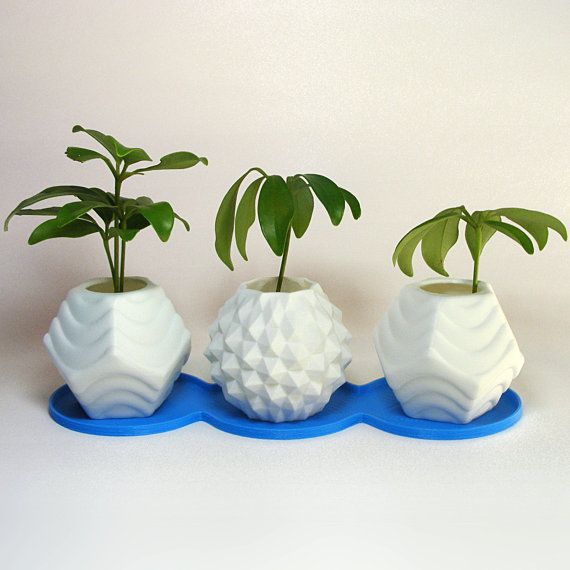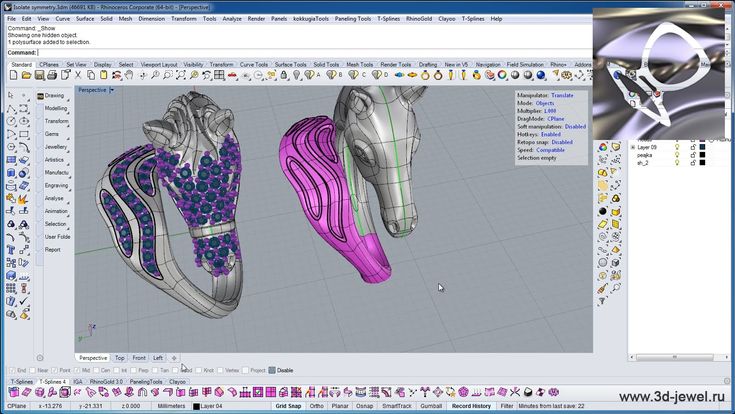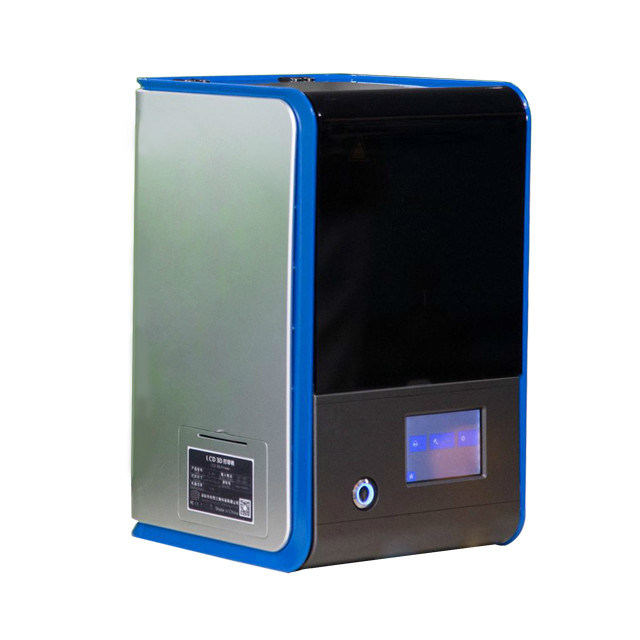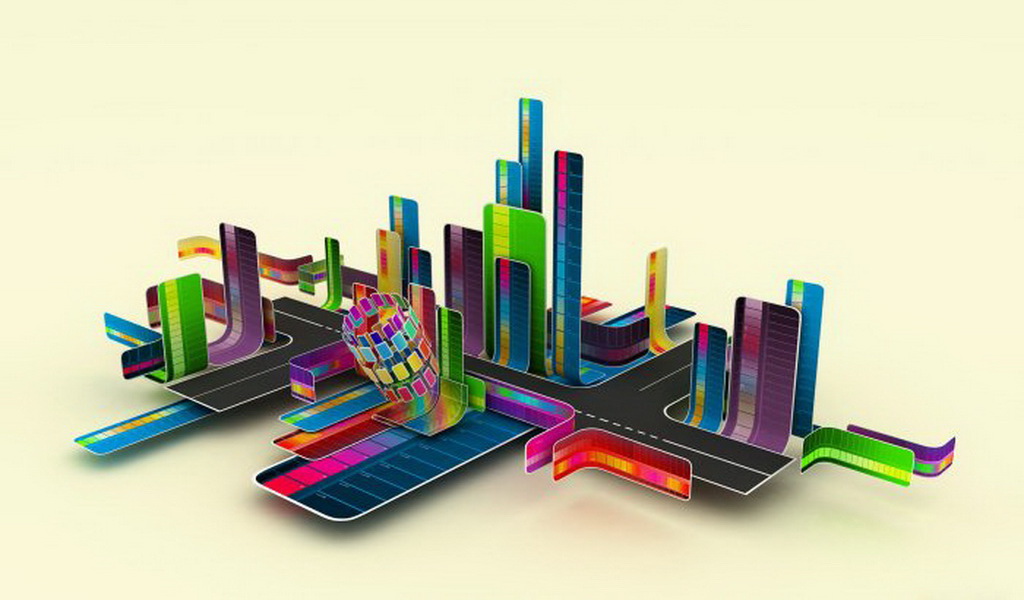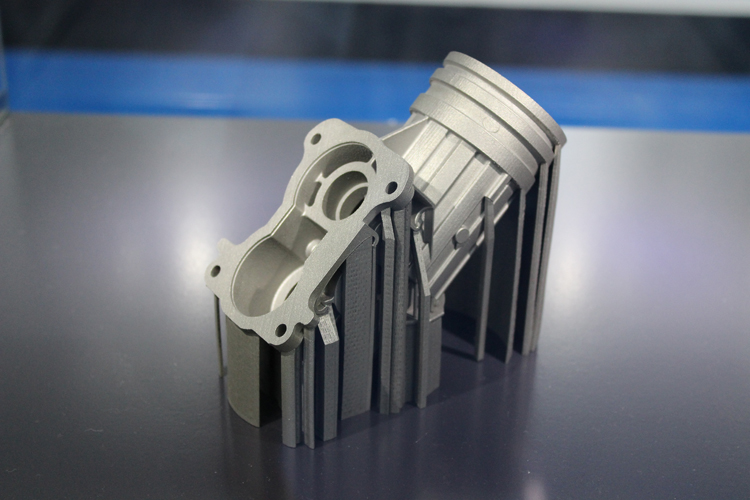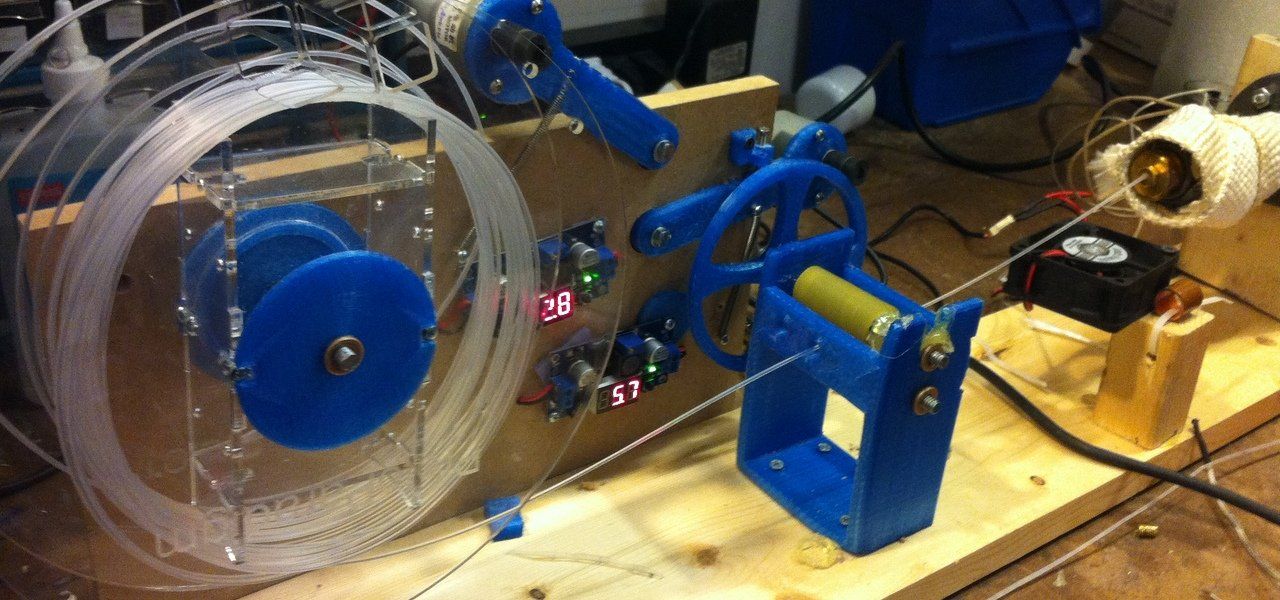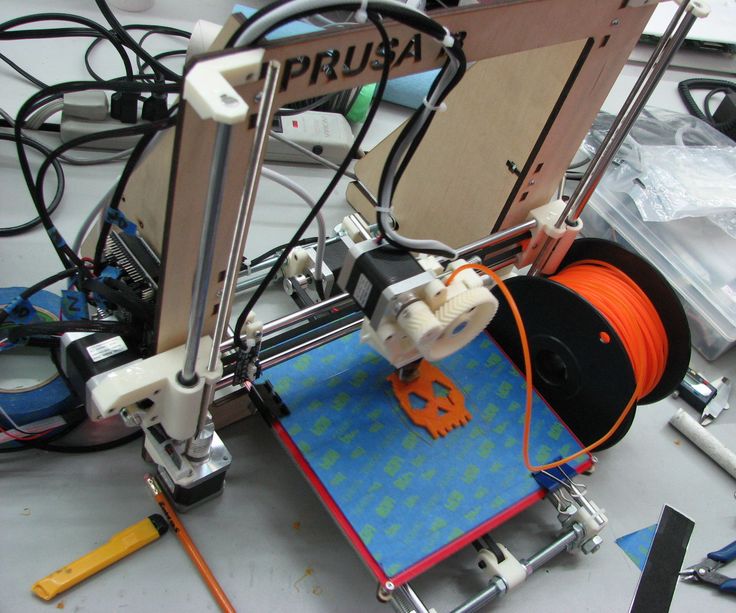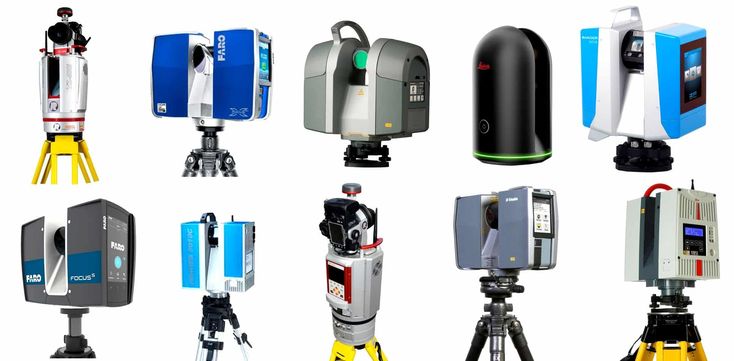Foodini 3d printing
Natural Machines Natural Machines
How it works
Essentially Foodini is a very clean system that pushes food down the capsule, through the nozzle, and prints it. A precision control system moves the capsule in a very accurate way, creating shapes which then can be stacked layer upon layer to become truly 3 dimensional creations. Foodini uses state of the art technology, hardware & software, and the power of the internet so that making your new creations is easy as pie.
PRINTING IS JUST THE BEGINNING
Center piece, side dish or garnish, Foodini augments and elevates the capabilities of your kitchen. Creations can be served or plated directly, baked in the oven, frozen, dehydrated... as you wish. Once you have your favorite dish optimised you can save it on the Foodini Creator app and print it precisely time and time again.
USE THE INGREDIENTS YOU WANT
From savoury snacks to sweet sensations. Foodini can print out almost any type of ingredient. Your food: elevated!
PRINT DIRECTLY ONTO YOUR FAVOURITE DISH
Foodini can print directly onto any flat surface that fits inside. That surface can be a special dish, stone slate, a cookie or on a birthday cake topper. Custom icing has never been easier or more accurate!
PREFAB OR DIY
Foodini comes pre-loaded with preset shapes and creations, but with Foodini Creator you can easily create your own.
EXPRESS YOUR COOKING CREATIVITY
Foodini Creator is our easy-to-use print application which comes pre-loaded on Foodini. Use the shape libraries to start designs and recipes, or create them from scratch with Foodini Creator tools. Foodini Creator can also be used away from Foodini on a tablet or laptop so you don't have to be standing in the kitchen in front of Foodini. Relax and create your prints in a comfortable chair or sofa away from the kitchen.
Need Support?
Find how-to articles, discover additional features of Foodini, get tips on how to create the best prints. .. and more.
.. and more.
We're here to make sure you are successful with Foodini.
Get Support
KITCHEN APPLIANCE
From the day we started Foodini, we built it to be a kitchen appliance: it's made from food-grade/safe materials.
STAINLESS STEEL
Our long life stainless steel food capsules will not retain food scent or flavor. Use them over and over again with your fresh ingredients.
5 CAPSULES
Foodini has room for up to 5 food capsules that automatically exchange as needed to create multi-ingredient prints.
TEXTURES
Foodini comes with different nozzle sizes which means you can print with different food textures.
EASY TO CLEAN
We don't like kitchen appliances that are hard to clean, and we're sure you don't either. Dishwasher safe parts and wipe down surfaces keep your Foodini clean.
INTERNET CONNECTED
Foodini is a WiFi IoT (Internet of Things) connected kitchen appliance; always have the latest and greatest software.
ONBOARD TOUCHSCREEN
Easily interact with Foodini via the onboard intuitive touchscreen, or connect via WiFi from another tablet or laptop.
CREATE
Foodini Creator is our easy-to-use print application which comes pre-loaded on Foodini. Use premade designs or create them from scratch.
Indicate the 5 capsule sizes you want:
Capsule
Select the nozzle
Log In
New customer
Register your details to complete your order.
Register
Already registered?
Password
Forgot your password? Create account
New customer
Choose a password
Confirm password
Receive email updates from Natural Machines: occasional (and we mean it!) emails with tips and offers to help you get the most out of Foodini. Like spam? We don't either. We will not spam you. Period. We also won't send you news items. Want to see our news? Please like us on Facebook, and follow us on Twitter and LinkedIn.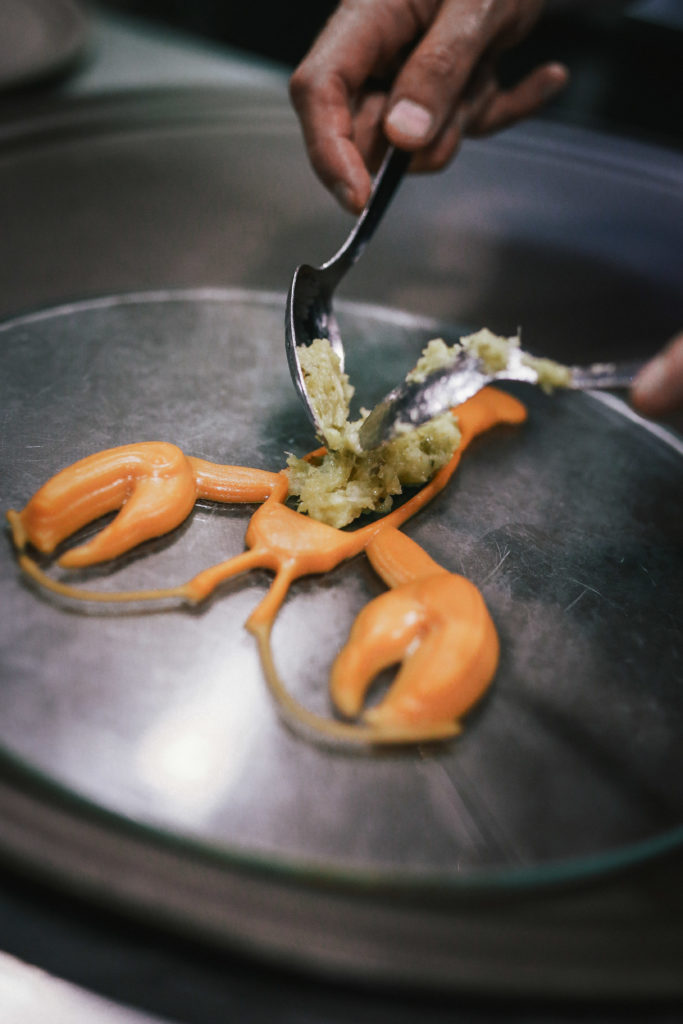 The choice is yours. Yes, I agree to your privacy policy
The choice is yours. Yes, I agree to your privacy policy
Registration not successful
Login not successful
Please check if your email address and password are correct
OK
Email Opt In (or Out)
Receive email updates from Natural Machines: occasional (and we mean it!) emails with tips and offers to help you get the most out of Foodini. Like spam? We don't either. We will not spam you. Period. We also won't send you news items. Want to see our news? Please like us on Facebook, and follow us on Twitter and LinkedIn. The choice is yours.
Payment error
Something is wrong with the address
Please double check the address, there appears to be something wrong. There could be a problem with one or more of the following: Address, City, State, ZIP/postcode.
Try Again
Change password
Old password
New password
Confirm your new password
Password change not successful
Forgot password
VERIFICATION CODE
New password
New password
Confirm your new password
Forgot password error
FOODINI CAN BE PURCHASED ONLINE FOR THE FOLLOWING COUNTRIES
Europe
Andorra
Austria
Belgium
Bulgaria
Croatia
Cyprus
Czech Republic
Denmark
Estonia
Finland
France
Germany
Greece
Hungary
Iceland
Ireland
Italy
Latvia
Liechtenstein
Lithuania
Luxembourg
Malta
Monaco
Netherlands
Norway
Poland
Portugal
Romania
San Marino
Slovakia
Slovenia
Spain
Sweden
Switzerland
Turkey
United Kingdom
Vatican City
Asia
China
Hong Kong
Japan
Korea
Macao
Malaysia
Saudi Arabia
Singapore
Taiwan
Thailand
United Arab Emirates
Americas
Canada
United States
Oceania
Australia
New Zealand
Don't see your country and you want a Foodini? Contact us.
Foodini - inclusive of one accessory box - ships for FREE to European Union countries, the United States, and Hong Kong. All other countries may incur a shipping charge that will be shown prior to completing your purchase. Free shipping does not apply to additional accessories purchased, which ships separately and incurs a shipping charge.
Meet the Foodini: Michelin-Star 3D Printing Kitchen Appliance
3D printing news News Meet the Foodini, the Michelin-Star Approved Appliance Bringing 3D Printing to the Kitchen
Published on December 21, 2020 by Amelia H.
Brothers, Javier and Sergio Torres, of the Michelin-starred restaurant, Cocina Hermanos Torres, have equipped their kitchen with the Foodini. The Foodini, is a 3D printing kitchen appliance developed by Natural Machines, a Barcelona-based food tech company. The device is the result of Natural Machines’ endeavour to provide an easy to use, healthy and sustainable solution to food production.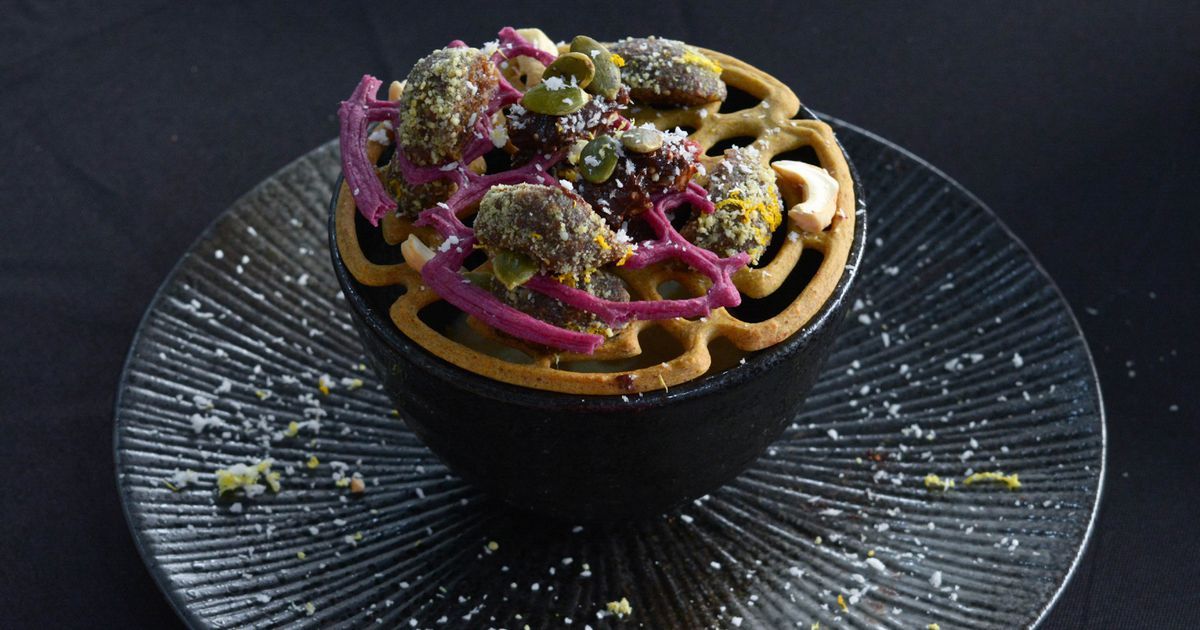 About 20% of total food produced is lost or wasted in EU. With the Foodini, the company’s first kitchen appliance, Natural Machines’ hope to encourage the use of locally produced ingredients and prevent food waste.
About 20% of total food produced is lost or wasted in EU. With the Foodini, the company’s first kitchen appliance, Natural Machines’ hope to encourage the use of locally produced ingredients and prevent food waste.
The Foodini was designed to be user friendly. The device is hygienic, food safe, only uses food-grade and BPA-free plastic, and comes with several dishwasher and oven safe accessories. The process is simple consisting of two main elements: fillings and creation. The fillings are the ‘materials’ which are printed. Ingredients are prepared and then put into stainless steel capsules to be printed. The Foodini can fit up to five capsules which automatically exchange enabling flexible and complex creations. The capsules also come with a variety of detachable nozzles, enabling a wide range of textures. Creation refers to the design aspect which determines the shapes that are printed. The Foodini Creator software allows users to make custom creations and save them for future use, or choose from a range of preloaded designs. The Foodini is equipped with a large touch screen and connects wifi, permitting users to print their designs from the Foodini Creator app on their phones. Creations can be served or plated directly, put in the oven, frozen, and even dehydrated. As, the Foodini can print onto any flat surface that fits inside the machine, it can also be used for things like icing cakes or biscuits.
The Foodini is equipped with a large touch screen and connects wifi, permitting users to print their designs from the Foodini Creator app on their phones. Creations can be served or plated directly, put in the oven, frozen, and even dehydrated. As, the Foodini can print onto any flat surface that fits inside the machine, it can also be used for things like icing cakes or biscuits.
The Torres brothers in their kitchen. Credit: Cocina Hermanos Torres
With quality and sustainability at the heart of their ethos, the Torres brothers are keen advocates of the Foodini, using it to print around 100 dishes a day. The pair were inspired and mentored by their grandmother, who taught them to create dishes using ingredients which would normally be thrown away, that she had taken home from her job cooking for the bourgeoisie in post-war Spain. According to Sergio Torres, “zero waste cooking is a fundamental part of our kitchen.” His brother Javier further explains, saying “we use all the parts of the food which gives us new opportunities in terms of taste and texture. For example, from a fish we even use the skin, the bones and obviously, the meat”. The challenge is making the dishes appetising. Thanks to the precision of 3D printing, it is possible to create appetising and elegant dishes, out of unappetising ingredients that would otherwise go to waste. Using the Foodini, the Torres brothers are able to get the most out of their ingredients and have even developed a zero-waste dish.
For example, from a fish we even use the skin, the bones and obviously, the meat”. The challenge is making the dishes appetising. Thanks to the precision of 3D printing, it is possible to create appetising and elegant dishes, out of unappetising ingredients that would otherwise go to waste. Using the Foodini, the Torres brothers are able to get the most out of their ingredients and have even developed a zero-waste dish.
The Torres brothers go into more detail about how they use Foodini in their restaurant, for the FutureKitchen video series infotains. Infotains seeks to ‘inform’ and ‘entertain’ about food technology. The project is funded by EIT food (the European Institute of Innovation and Technology). The videos are the result of collaboration between academia, start-ups, and industry partners, in an endeavour to produce honest and impactful food stories. You can watch the Torres brothers’ feature below.
According to Natural Machines, the Foodini outpaces the microwave, and will shortly become a standard household appliance. Lynette Kucsma, co-founder and CMO of Natural Machines, said “We believe that in 10 to 15 years, 3D food printers will become a common kitchen appliance in both home and professional kitchens, similar to how an oven or a microwave are common appliances in kitchens today. The printer would enable people to become food manufacturers themselves.”
Do you think the Foodini could be the next microwave? Let us know in a comment below or on our Facebook and Twitter pages! Sign up for our free weekly Newsletter, all the latest news in 3D printing straight to your inbox!
how 3D food printers can help you maintain a healthy diet April 24, 2018, 23:54
Anastasia Ksenofontova
Scientists from Ewha Women's University (South Korea) have created a 3D printer that prints products with a given nutrient content and predetermined taste properties.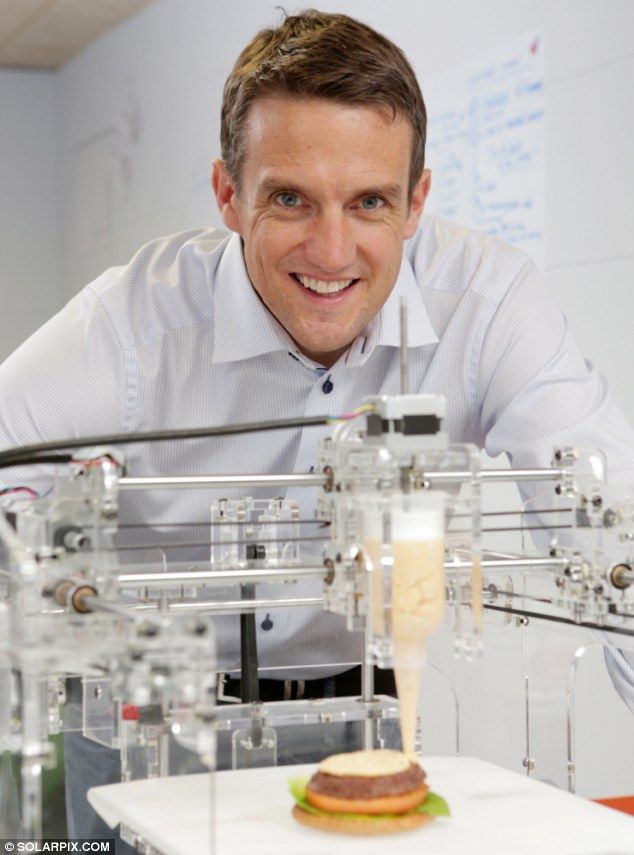 The author of the development, Jin-Kyu Lee, presented his invention on April 24, 2018 at the annual meeting of the American Society for Biochemistry and Molecular Biology in San Diego. About the prospect of using "smart" food - in the material RT.
The author of the development, Jin-Kyu Lee, presented his invention on April 24, 2018 at the annual meeting of the American Society for Biochemistry and Molecular Biology in San Diego. About the prospect of using "smart" food - in the material RT.
from 3 d- Products up to 3 D- kitchens
South Korean university of the NIGHA Women's University developed a 3D printer that turns powder ingredients into full-fledged food products with a given content of nutritional substances predetermined taste properties.
Related
A spoon for the Earth: how a healthy diet can improve the ecology of the planet
June 2 is Healthy Eating Day. Research scientists show that changing eating habits and accustoming yourself to the right...
Key nutrients (such as carbohydrates and proteins) are ground into powder at a temperature of -100 °C. Then the resulting raw material is heated and turns into a porous film. After that, a three-dimensional product is created from several layers of films. The uniqueness of the development lies in the fact that by combining films with different content of proteins, carbohydrates, trace elements and vitamins, you can get a product saturated with nutrients in the required proportion. In addition, you can experiment with the flavor palette of the product, combining, for example, powdered pear and apple.
Then the resulting raw material is heated and turns into a porous film. After that, a three-dimensional product is created from several layers of films. The uniqueness of the development lies in the fact that by combining films with different content of proteins, carbohydrates, trace elements and vitamins, you can get a product saturated with nutrients in the required proportion. In addition, you can experiment with the flavor palette of the product, combining, for example, powdered pear and apple.
“We believe that one day anyone will be able to purchase cartridges containing powdered analogues of various ingredients that can be “collected” together using 3D printing and prepared a “dish” according to individual needs and preferences,” said the author of the development, the researcher from Ewha Women's University Jin-Kyu Lee.
A balanced diet
The developers believe the new technology will significantly reduce the amount of food waste and the financial costs of storing and transporting food. Also, according to scientists, their invention will help meet the food needs of the growing population of the planet. According to the Food and Agriculture Organization of the United Nations, by 2050 the world's population will increase from the current 7.6 billion people to 9.8 billion, and in 2100 it will reach 11.2 billion.
Also, according to scientists, their invention will help meet the food needs of the growing population of the planet. According to the Food and Agriculture Organization of the United Nations, by 2050 the world's population will increase from the current 7.6 billion people to 9.8 billion, and in 2100 it will reach 11.2 billion.
“If a family gets a 3D printer, then they don't have to be afraid of hunger. Of course, we are only at the beginning of the journey. We continue to optimize our development to create customized products that last longer than usual,” said Jin-Kyu Lee.
- © 3D Systems Corporation
The first 3D food printers appeared in 2015 and could only prepare simple meals. One of these devices works in the FoodInk 3D kitchen restaurant, opened in London in 2016. Everything in this establishment - from food to furniture and cutlery - is created on a 3D printer. The restaurant offers a nine-course menu to visitors. The 3D printer used here works on the principle of a conventional one, the role of ink is played by a paste of edible ingredients, such as cottage cheese or chocolate mousse.
The restaurant offers a nine-course menu to visitors. The 3D printer used here works on the principle of a conventional one, the role of ink is played by a paste of edible ingredients, such as cottage cheese or chocolate mousse.
According to Russian nutritionists, the development of Korean scientists will help people maintain a balanced diet. However, experts emphasize that it is not worth doing “self-healing” with the help of a 3D printer - first you need to seek advice from a specialist.
“On complex developments that provide for a certain nutrient content, a person will not last long. In addition, it deprives him of the pleasure of eating. Such 3D food can be balanced and healthy, but quickly get bored. And of course, it’s better not to prescribe a diet for yourself, but to turn to a competent nutritionist who will make up a diet based on the state of your body, ”said Alla Pogozheva, professor at the Research Institute of Nutrition of the Russian Academy of Medical Sciences, in an interview with RT.
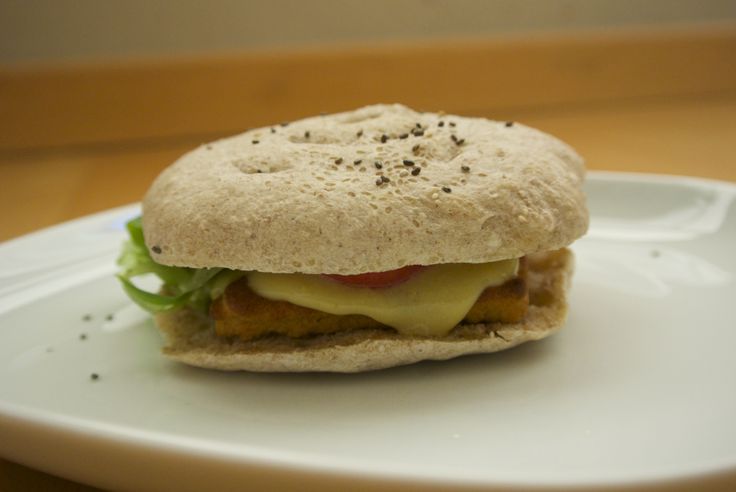
Russian developments
“In Russia, printers for printing products are not yet manufactured. For now, they remain a luxury item. However, in ten years, printers for printing products will most likely become more affordable for the average consumer, ”said Alexander Vinogradov, director of the chemical and biological cluster at ITMO University, in an interview with RT.
Related
"Printed" organ: Chinese scientists have grown and transplanted auricles to five children at once
Scientists from China have grown new ears for five children born with microtia - insufficient development or complete absence of the ear...
At the same time, 3D printing methods are actively developing in Russia, but in a more fundamental direction. So, domestic researchers from the Federal Research Center "Crystallography and Photonics" of the Russian Academy of Sciences developed in April 2018 the first 3D printer that immediately creates a three-dimensional structure.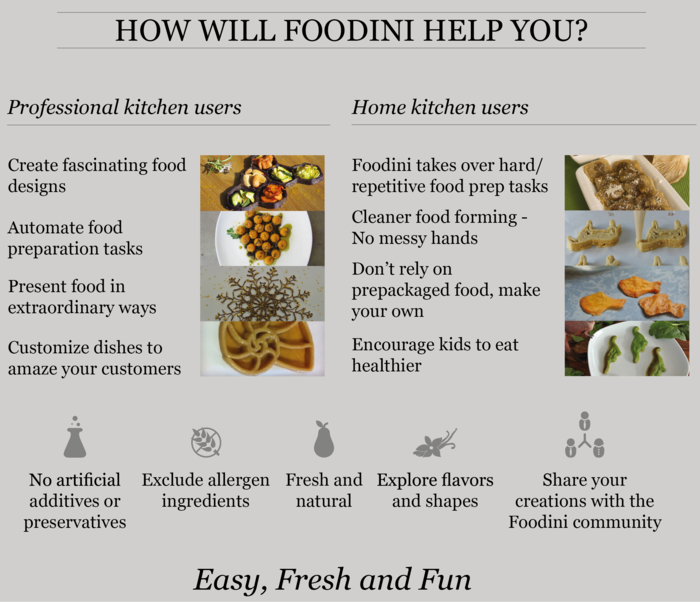 The development of Russian scientists can be used in tissue engineering. The resulting structures made of polymers can replace damaged areas of human tissues and organs.
The development of Russian scientists can be used in tissue engineering. The resulting structures made of polymers can replace damaged areas of human tissues and organs.
And scientists from Tomsk Polytechnic University use 3D printing technologies to develop the space industry. They made the first nanosatellite, the body of which is printed on a 3D printer, and they are also creating a printer for work on the ISS, which will help astronauts print the necessary part in the event of a breakdown. In addition, improved technology will make it possible to build bases and stations on the Moon using lunar soil as a material for three-dimensional printing.
characteristics, pros and cons of each model
07.04.2021
Content
-
- What is a food 3D printer
- SPRISTION
- The raw materials used
- Driving 3D printeries
- Popular firms
- Top. : list of the latest models
- 1. PancakeBot 2.0
- 2.
 Wiiboox Sweetin
Wiiboox Sweetin - 3. Choc Creator V2.0 Plus
- 4. Choc Creator V2.0 Plus food 3D printer with cooling chamber
What is a 3D food printer
The main feature of a food 3D printer is the raw materials used: instead of printing ink, the device is filled with edible ingredients. The database stores a large number of different recipes, and in order to print a dish, you just need to select one of them and activate the printing process. The final product is layered on a work surface or on a plate: it can be baked in the oven or sent to the freezer.
Application
Futuristic 3D Printed Sugar Candy
Cookies printed with glaze
Chocolate logos of famous companies
Cream Photo Print
Buying a food 3D printer is worth the owners of coffee houses, author's bakeries and private workshops.
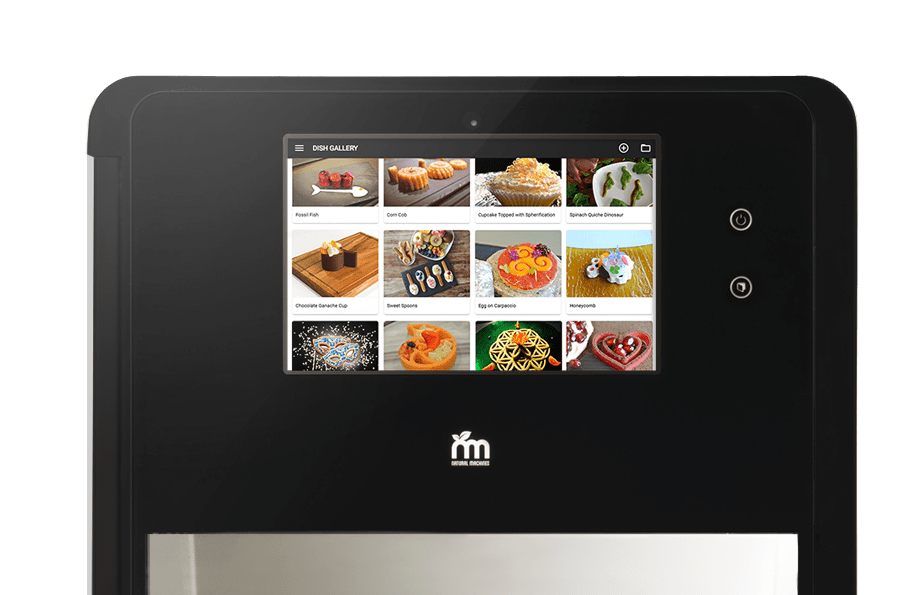 The finished product has a unique shape and bright appearance. Food printers are often used to create custom wedding cakes, cartoon character cookies, Christmas gingerbread cookies, and so on. The possibilities of a baker who owns such a device are endless: the main thing is to buy quality products.
The finished product has a unique shape and bright appearance. Food printers are often used to create custom wedding cakes, cartoon character cookies, Christmas gingerbread cookies, and so on. The possibilities of a baker who owns such a device are endless: the main thing is to buy quality products. Raw materials used
The following ingredients are used as raw materials:
-
Chocolate without additives and impurities;
-
Mastic;
-
Sugar;
-
Whipped cottage cheese;
-
Vegetable and fruit pastes;
-
Fish and meat pates;
-
Flour;
-
Cheese, etc.
The confectionery pattern is applied to sugar, wafer or shock transfer paper. The first type has a sweetish aftertaste and aroma of vanilla. Due to the snow-white surface, no additional coating is required: the drawings look bright and clear.
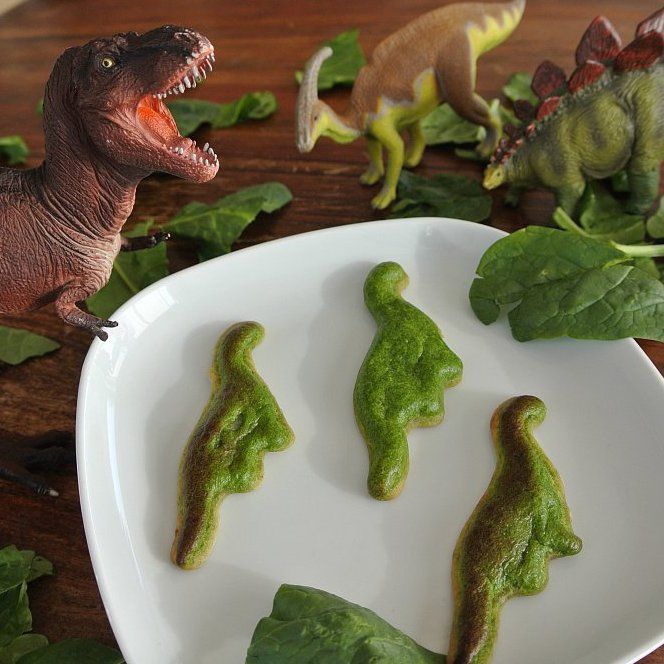 The wafer paper is made from rice flour and does not have a special taste, due to the light shade, the final drawings look less clear. Shock transfer paper is completely transparent and is suitable for transferring a design to a product (for example, a cake). For the packaging of finished products, food-grade plastic for a 3D printer is used.
The wafer paper is made from rice flour and does not have a special taste, due to the light shade, the final drawings look less clear. Shock transfer paper is completely transparent and is suitable for transferring a design to a product (for example, a cake). For the packaging of finished products, food-grade plastic for a 3D printer is used. Interesting! Food printers are involved in waste reduction. Unattractive fruit and confectionery leftovers are used in the preparation of printing mixes. This makes it possible to use the means of production more efficiently.
Types of 3D food printers
Cooking enthusiasts can take advantage of the following food printing devices:
-
Food 3D printers are devices that print dishes whose recipes are listed in a database. The final product is layer-by-layer superimposed on the work surface, and the raw material comes from filled cartridges;
-
Confectionery printers are used to transfer images onto specialty paper or to design small confectionery products such as candies.
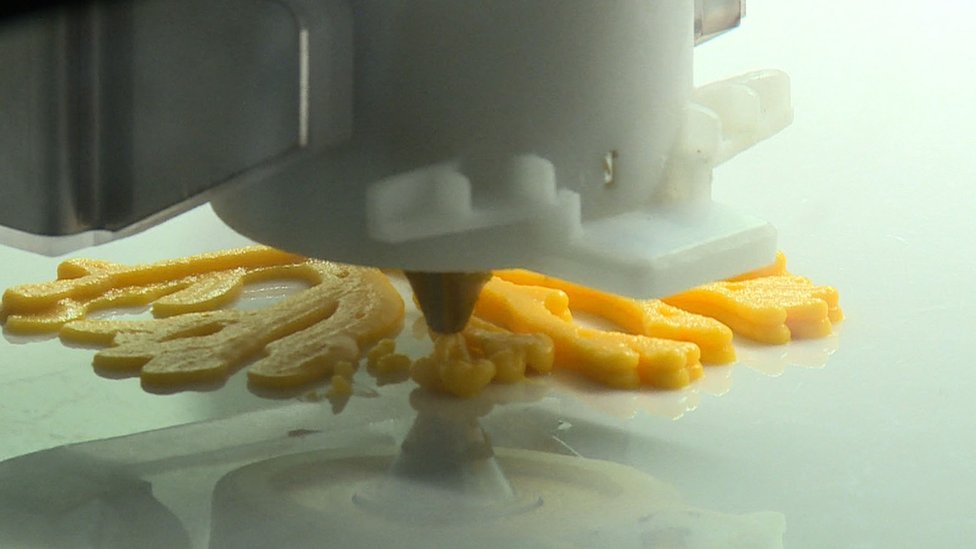 Such printers print an image on pre-prepared paper: rice, wafer or shock transfer;
Such printers print an image on pre-prepared paper: rice, wafer or shock transfer; -
Food plotters transfer the image not to paper, but directly to the finished product. For example, a plotter is used to transfer an image directly onto a cake.
There are several types of food 3D printers:
-
Extrusion - paint is applied to the surface before the dish is created. The process is controlled by the computer with the loaded image. The system has an extruder that heats the food mixture, and the distribution of raw materials depends on the print head. The raw material is loaded into a syringe placed in the head. This means that in order to combine different shades, you have to periodically stop printing and change the syringe;
-
A carousel-type food 3D printer also has an extruder, but its main feature is the method of feeding raw materials: the containers rotate around the working surface, the supply and dosage of the material used depends on the recipe specified in the program.
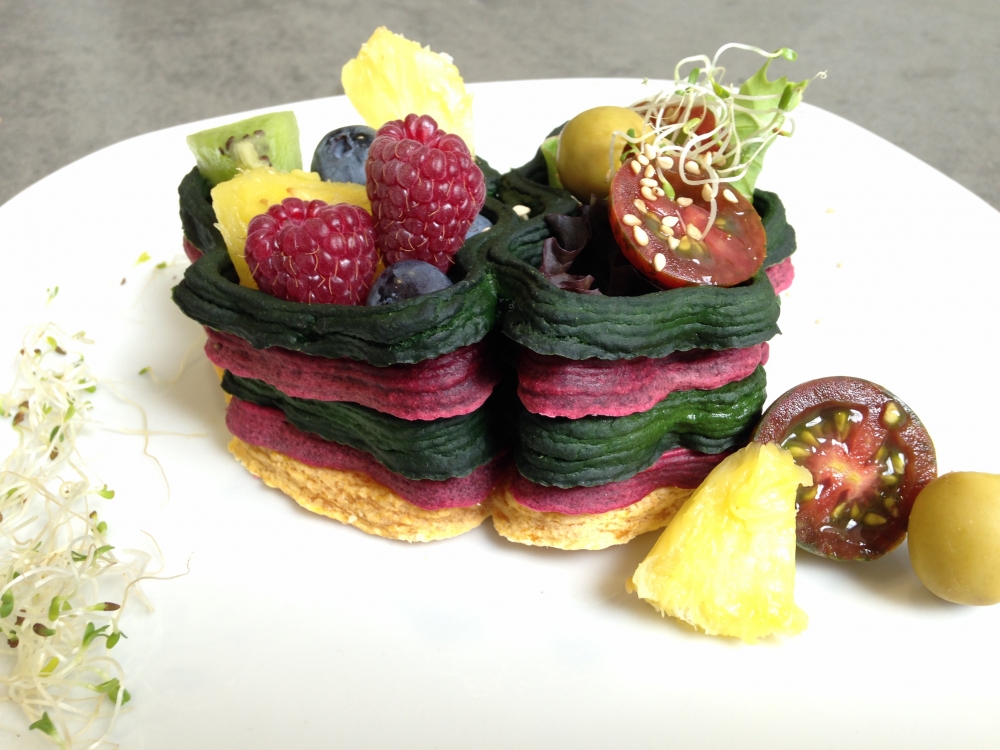 The storage can contain countless recipes, and operation does not cause difficulties even for an inexperienced user.
The storage can contain countless recipes, and operation does not cause difficulties even for an inexperienced user.
Popular manufacturers
Eminent manufacturers offer the best value for money food 3D printer. Quality devices provide accurate printing, high speed, durability, simplicity and ease of use.
Wiibox
This company manufactures 3D printers with high build quality and high productivity. These are universal mechanisms that fill both chocolate paste and mashed potatoes. Numerous positive reviews confirm the high quality of Wiibox products.
byFlow
The Dutch company byFlow specializes in food printing technology. The pursuit of excellence helps the company open up new horizons: the technique prints products from spinach, meat emulsion and other materials. High build quality, ease of use and durability - all these characteristics are applicable to the products of this company.
Choc Edge
Choc Edge is committed to revolutionizing the world of chocolate making.
 Numerous experiments and focus on consumer feedback help to create more powerful devices that provide the optimal temperature for preparing and storing chocolate figures.
Numerous experiments and focus on consumer feedback help to create more powerful devices that provide the optimal temperature for preparing and storing chocolate figures. Attention! Printing dishes helps save time on cooking: instead of culinary worries, the user can simply activate the printing process and get on with other things.
Free shipping
Add to compare
Item added to compare Go
Manufacturer Choc Edge Available on credit. To checkout, add the product to the cart and follow the instructions Go
Manufacturer Wiiboox Free Shipping
Add to compare
Product added to compare Go
Manufacturer Choc Edge Top 10 Best Food Printers: A List of the Most Current Models
Before you buy a food 3D printer, you need to familiarize yourself with the most popular devices on the world market.
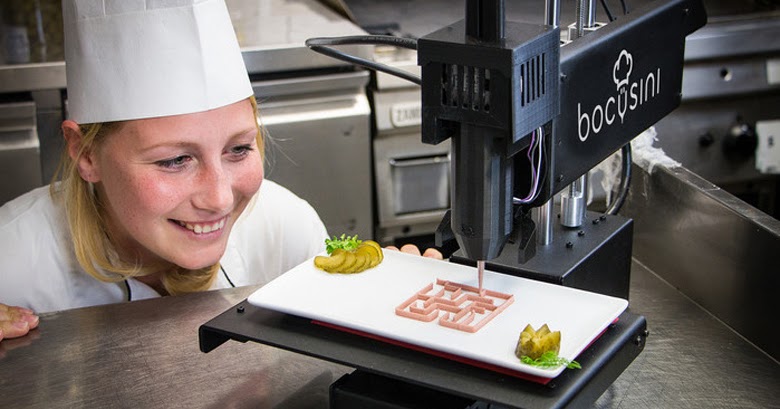 The top is based on ratings and customer reviews.
The top is based on ratings and customer reviews. 1. PancakeBot 2.0
PancakeBot 2.0 is easy to use, which means it's suitable for inexperienced users too. Users can choose from suggested designs in the software, or create their own. Used to print pancakes.
Pros:
-
Ease of operation;
-
A wide range of proposed projects;
-
High speed.
Cons:
2. Wiiboox Sweetin
Buying a food printer from Wiiboox is worth not only for confectionery lovers, but also for ordinary chefs: the device prints cakes, cookies and even mashed potatoes. The main raw materials can be meat, cheese, chocolate, jam, mashed potatoes, dough and much more. A convenient touch panel helps to set the desired mode of operation, and a stylish appearance complements the interior of any establishment.
Pros:
-
Versatility: the ability to print not only sweet dishes, but also side dishes;
-
Attractive appearance;
-
High build quality;
-
Convenient control by touch panel.
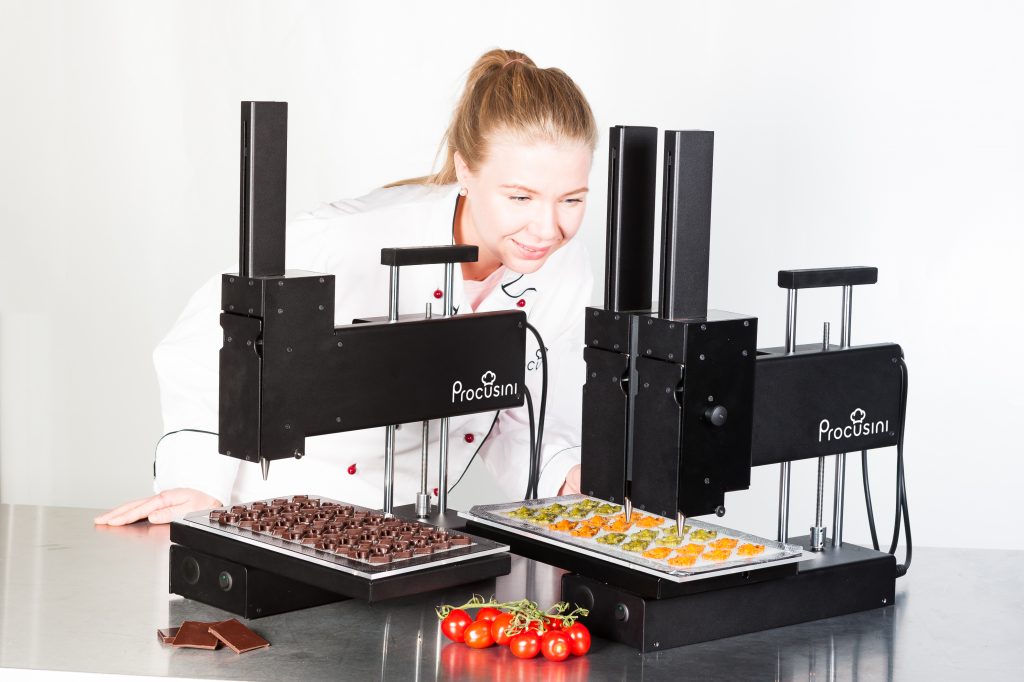
Cons:
-
High price.
3. Choc Creator V2.0 Plus
When talking about which chocolate 3D printer to buy, it is worth mentioning the numerous advantages of Choc Creator V2.0 Plus. The new model has become more perfect: the developers have worked hard to eliminate the shortcomings of the previous version. The modern model has small dimensions, thanks to which it can be used in any kitchen, and the uniform heating of the syringe ensures high-quality and uninterrupted operation. In practice, the chocolate printer has shown tremendous potential: it prints complex figures from chocolate.
Pros of :
-
Attractive appearance;
-
Uninterrupted work;
-
Durability;
-
The ability to create durable and beautiful chocolate figures.
Cons :
4.
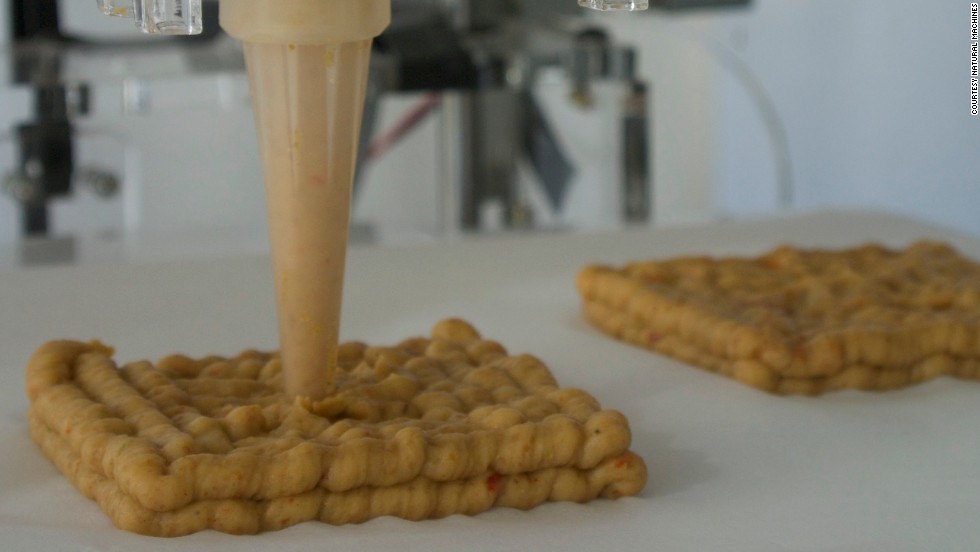 Food 3D printer Choc Creator V2.0 Plus with a cooling chamber
Food 3D printer Choc Creator V2.0 Plus with a cooling chamber
The new version of the Choc Creator V2.0 Plus printer is equipped with cooling chambers by popular demand. Users say that maintaining the optimal temperature in the room to preserve the integrity of chocolate figures is too problematic: therefore, the new device cools the raw materials. The price of a food 3D printer with a cooling system is slightly higher than a classic one, but the high performance of the final product justifies any costs.
Pros of :
-
Availability of a cooling system for finished products;
-
High printing precision;
-
Long service life;
-
Ease of use: You can turn the fans on and off with the side buttons.
Cons :
-
High price.
Attention! Confectionery food 3D printers are often used by artists to create edible masterpieces.
 This is a unique technology that helps to unleash the creative potential of the chef.
This is a unique technology that helps to unleash the creative potential of the chef. 5.byFlow Focus
Food printer from the Dutch company byFlow, which specializes in 3D printing of food. The compact high-tech device is used for the bakery industry, and the cartridges are suitable for the application of any pasty ingredients.
Pros:
Cons:
6. Chefjet Pro
Buying a ChefJet Pro food printer is a must for people who dream of making bright and stylish sweets. The device is created on the principle of inkjet printing: sugar-containing powder materials are used instead of paints. The final product is made by powder layering. The printer is suitable for combining different shades and creating gradients.
Pros:
-
The ability to create unique flavors;
-
Neat and bright printing;
-
Aesthetic appearance of the device.
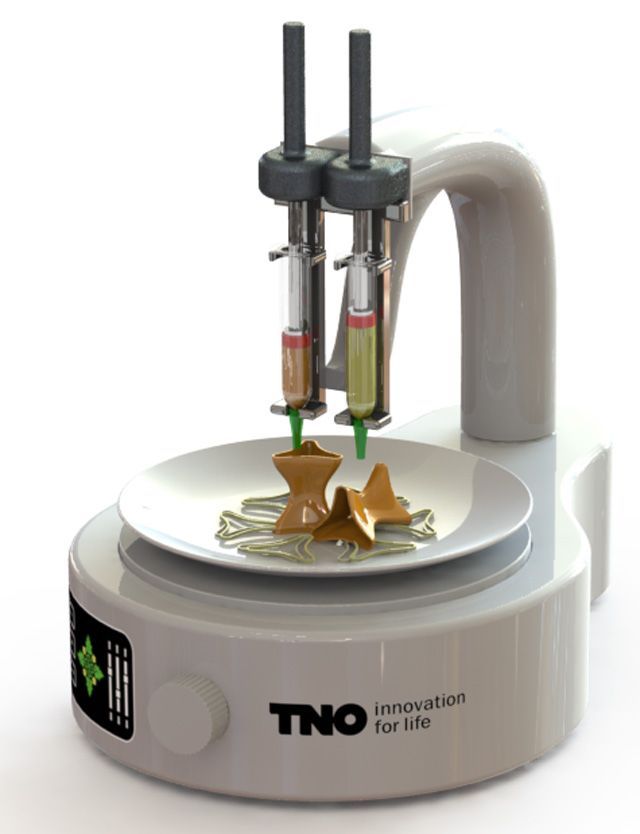
Cons:
-
High price.
7. Foodini
The 3D food printer from Foodini works on the principle of a stationary printer, but instead of printing inks, layer-by-layer imposition of edible raw materials is used: dough, cream, chocolate, cream, etc. The device is versatile: the user himself can choose the material, or use ready-made cartridges with products.
Pros:
-
Practicality;
-
High build quality;
-
Attractive appearance;
-
Availability of an online platform with unique recipes.
Cons:
8. Mmuse – Chocolate 3D Printer
The closed MMuse 3D printer is suitable for chocolate printing. Chocolate beans are used as raw materials: they are heated in an extruder and fed to the work surface through the print head.

Pros:
Cons:
9. ZBOT Commercial Art Pancakes Printer F5
ZBOT Commercial Art Pancakes Printer F5 3D Printer
A food printer from Chinese manufacturers is used in the process of making pancakes of various shapes. Ease of operation allows the device to be used by children under adult supervision.
Pros:
-
Ease of operation;
-
High build quality;
-
Affordable cost.
Cons:
10. ZMorph VX
A multifunctional 3D printer capable of printing not only food, but also rubber, ABS plastic, polylactide, PVA, nylon, elastic and metal materials. The product is able to print with chocolate, butter, cookies, icing and other ingredients. In addition, there is a function of engraving and CNC milling.
Pros:
Cons:
-
High price.
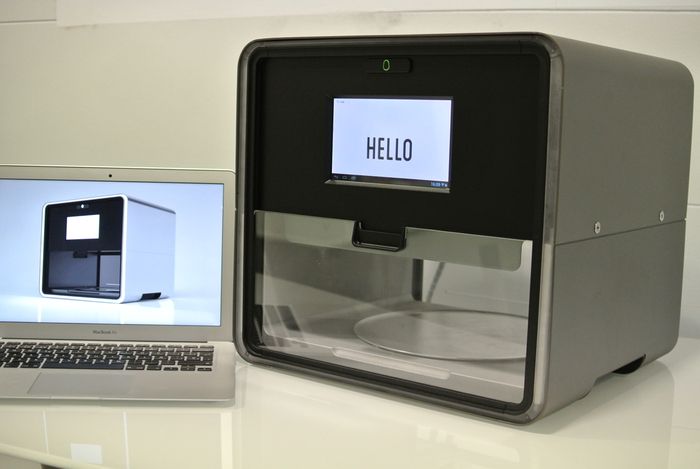
Selection guide
The modern market offers a wide range of food printers. Before making a purchase, you need to carefully study the characteristics of each model and build on your own preferences. Experts have created several recommendations for choosing:
-
In case you want to create realistic images for confectionery 3D printing, pay attention to the diameter of the nozzle: the narrower it is, the more accurate the image will be;
-
It is better for people living in regions with a warm climate to purchase chocolate 3D printers with a cooling system: such devices ensure that the figurines are kept at the optimum temperature;
-
The possibility of self-refilling the cartridge is the most practical and economical way to operate the printer;
-
Print speed is an important consideration for restaurant owners. Large batches of dishes must be produced quickly, and for home use this is not a very strict selection criterion.
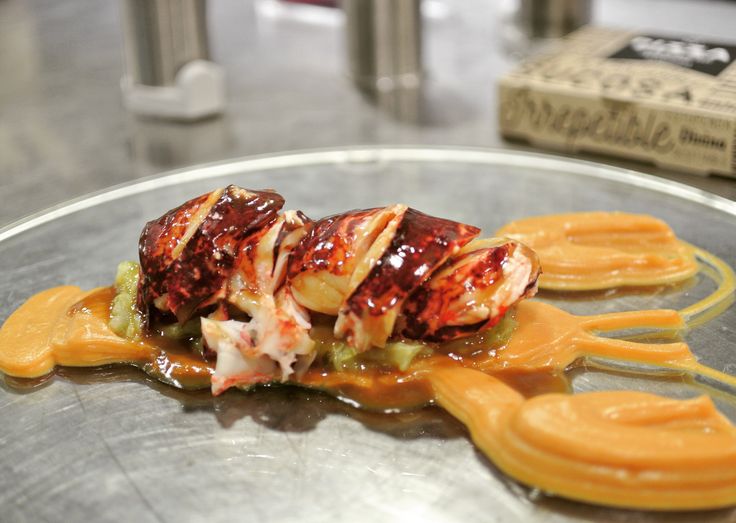
Learn more
-
- What is a food 3D printer


